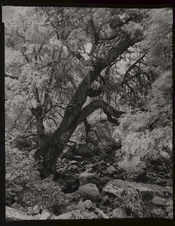I'm on the newer side of large format, I shoot a Horseman 45HF and I mainly meter with my Sekonic Studio-Deluxe (sometimes my phone when I forget my meter!). I know both options are not the best for large format but I have produced some results that I've been happy with, at least as the first attempts trying out 4x5. What are some good spotmeter options that are reliable?
I know of the classics like the Pentax V but the ones I've found are either out of my budget or the lenses have haze/fungus, so what else are people using and what are some options that I might not be aware of? Also where's some places that aren't ebay to look for spotmeters (unfortunately I live in a camera store desert, so no real local options to check).
Also what are some tips people have for spotmetering a scene? I've owned my 4x5 for about a year now so I'm still learning and I'm happy to hear any tips!
Thanks for the input and sorry for the common question.
"I know both options are not the best for large format”: OK, WHY, exactly, do you not think either of those two meters are not satisfactory?
They both meter in different ways, but as to grabbing a light reading either one does the job.
PICK ONE METER, and learn to use it properly and well.
There a billion pages of instructions on how to use a light meter, out there, most are OK, but finally, if you download (or already have) a copy of the Sekonic light meter instructions for the meter(s) you have, those are probably as good as anything for learning how to actually METER.
There is no MAGIC to using a meter, for most metering tasks, it reads the light available, you have a film with a certain ISO rating, and with a 4x5 camera, you aren’t shooting action sports (probably).
Normally your subjects are not moving, they are lumps on a table, pick any combination of lens opening and shutter speed to put the proper amount of light on the film for a proper exposure.
1). Shutter speed controls how much motion is recorded on the film.
2). Lens opening controls how much of your subject, front to back, will be rendered more or less sharply.
3). Film ISO governs how much light you may need to get to the shutter speed or lens opening you want to use.
4). The amount of light you have (turn on or off an extra bulb) allows you to control the range of shutter speeds and lens openings you can use (much like changing the ISO of the film you use).
You have 4 factors:
The ISO of the film is ‘fixed’, choose Tri-X you have 400.
Turn on the lights, you have X lumens…those 2 things, once selected, are now beyond your control, “you cannot turn the sun on and off, nor dim it at will”.
Pick the shutter speed you want to use…now, there is, theoretically, only ONE lens opening which is ‘allowed’ in order to get a proper exposure.
If you change the shutter speed to stop motion, you must compensate for that change by adjusting the lens opening.
It ain't hard, it’s just photography and how it works, or just look at the Kodak film instruction sheet for solid guidance.
60+ years in photo, camera store manager/owner for 50+ years…I’ve probably forgotten more than most people know (no brag, I am just getting old).






